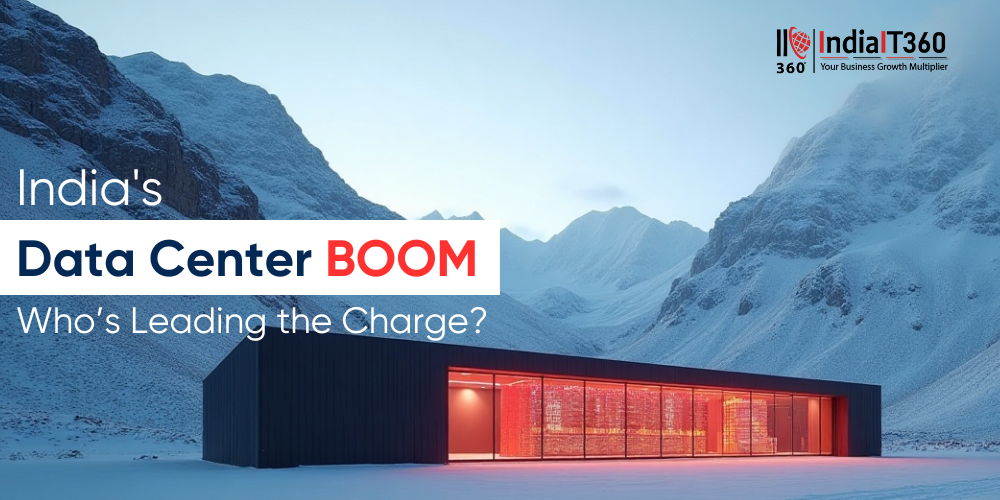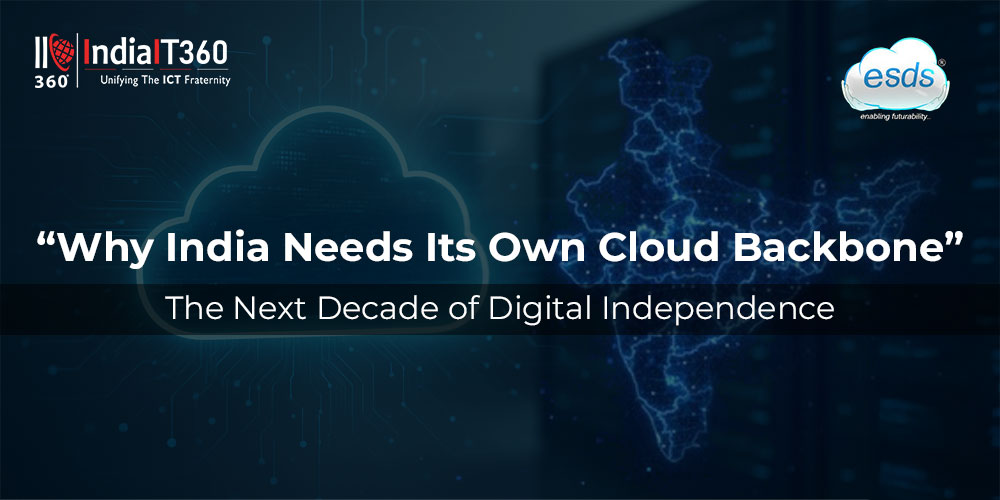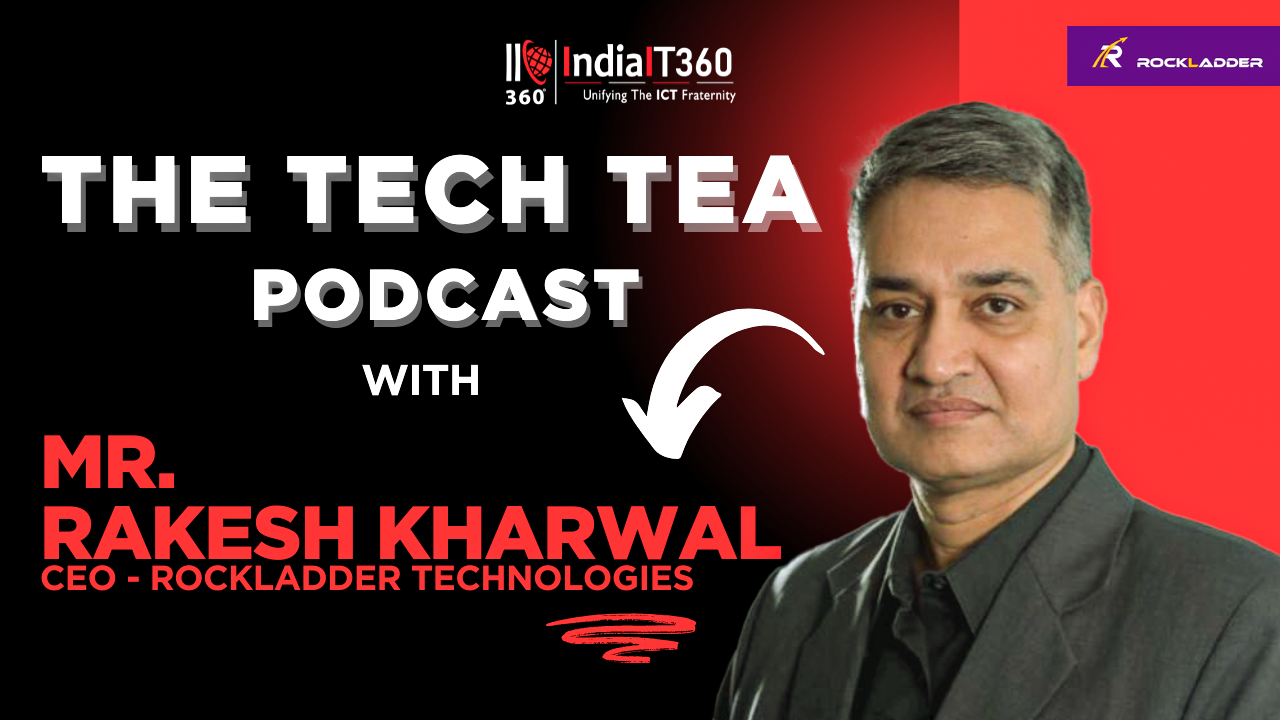India’s Data Center Boom: Who’s Leading the Charge?
India is seeing an unprecedented data center boom, which is steered by the growing need for digital transformation all around the industries and, with the rise of artificial intelligence (AI), the government’s push for data localization. In addition, the overall growing need for internet penetration and mobile data usage has fired up the need for high-grade data centers like never before. And with businesses and individuals needing data on a daily basis, the need for robust storage solutions has become important. And as a result, there are various players who have come forward to create data centers to look after the growing demand.
Let's Understand the Reason Behind the Growing Need for Data Centers
One of the basic reasons behind the growth of India’s data centers is the expansion of internet usage. And in the past five years, the overall number of internet users has changed drastically, with over 55% of the overall population now connected. Mobile data has skyrocketed, with the average user consuming more than 21 GB of data per month, which is nearly double what it was a few years ago. The overall quick manufacturing of the smartphones and affordable data plans has increased the overall surge, which makes India the largest consumer of digital content across the world.
Another important factor is the enormous investment being made in domestic and international companies. Over the past decades, more than $6.5 billion has been shifted to India’s data center market. Tech companies like Amazon Web Services (AWS), Microsoft Azure, and Google Cloud have widened their presence by setting up multiple data centers all across the country. And Indian corporations, which include Adani Group, Bharti Airtel, and Reliance Jio, have made significant moves in the industry, which further enhance the strength of the overall country’s infrastructure.
Government policies have played a significant role in the growth of the data centers. The Reserve Bank of India’s mandate in 2018, which requires financial data to be stored within the country, marks a turning point for the overall industry. Furthermore, the introduction of the Digital Personal Data Protection Act, 2023, has created strict regulations on data storage and overall privacy and asked businesses to invest more in the localized data centers. The government’s initiatives, like MeghRaj and the Smart Cities project, have a big contribution towards the overall expansion of the digital infrastructure, which is creating ways for a more and more data-driven economy.
The overall need for 5G tech and the growing need for the adoption of AI have totally intensified the need for high-performing data centers. AI apps, mainly those that need enhanced computational power, depend on sophisticated data storage and overall processing capabilities. And with 5G networks on the edge to set up various data consumption threefold, businesses are growing to establish the overall infrastructure that can look after the exponential growth in data volume and overall complexity.
India’s Data Center Hubs
India’s data center market is basically incorporated in the metro cities, with Mumbai and Chennai leading the overall path. Mumbai holds responsibility for nearly half of the country’s total IT power capacity, which makes it the overall center of India’s data center ecosystem. The city’s strategic location, solid power supply, and undersea cable landing stations make it an ideal hub for overall data storage and processing. Furthermore, Chennai is growing rapidly and turning into a strong alternative, which makes it an apt hub for data storage and overall processing. Chennai is also growing rapidly and turning into a strong alternative for growing 340% growth in the overall data center capacity over the past two years.
And other cities like Noida, Bengaluru, Hyderabad, and Pune are gaining traction as a data center landscape. Furthermore, these cities contribute around 26% of India’s overall market share, thanks to the established IT infrastructure and highly skilled workforce. In addition, there has been rapid growth in the land acquisitions for the hyperscale data centers, with over 440 acres being purchased in the past five years. Also, Hyderabad has been in this trend, and accounting for 69% of land investment has been followed by Mumbai and Pune.
The Future of Data Centers in India: Growth, Localization, and Sustainability
The overall rise of the data centers in the Tier-2 and Tier-3 cities is shaping India’s digital infrastructure, with locations like Jaipur, Ahmedabad, Kochi, Vizag, Lucknow, Patna, and Bhubaneswar attracting expanding investments. And these decentralized facilities improve AI-driven applications, cloud services, and industries like banking, healthcare, and eCommerce, which makes data centers important as businesses are willing to expand their overall digital reach. Also, data localization has become central to India’s digital policy, making sure that data sovereignty, improving national security, and boosting overall economic growth via local investments. Furthermore, strict regulations have showcased global debates, with concerns over trade barriers, cross-border data flow restrictions, and potential government reach. In spite of this, these companies invest in the localized data centers to go with the overall regulations and support India’s digital ecosystem.
And as sustainability is taking priority, the overall future of green data centers in India is getting traction, with the overall renewable energy sources like solar, wind, and hydroelectric power; advanced cooling techniques; reduced carbon footprints; and operational expenses. Businesses are actively grabbing sustainable designs to align with the overall global climate goals while maintaining the standards in India’s rapidly growing data center landscape.
India’s Global Standing in the Data Center Market
In spite of producing nearly 20% of the world’s data, India presently reports only 3% of the global data center capacity. And the overall gap presents an opportunity for the overall country to increase its global data center capacity. And this gap showcases a significant opportunity for the overall country to increase its presence in the global data. With planned investments, tough government policies, and quick adoption of digital technologies, India is on its way to becoming a leading emerging data center destination. Furthermore, businesses and consumers create a volume of data, the requirement for the advanced, high-performing, and sustainable data centers that will continue to grow and position India as a leading player in the digital economy.
Conclusion
India’s data center boom is evidence of the country’s speedy digital transformation. And with the rapid use of internet usage, AI adoption, and data security concerns, the overall demand for the cutting-edge infrastructure will continue to flow. Industry players are investing a lot, while government policies on data localization are slowly enhancing the growth, making India a global data center hub. Also, as the market turns competitive day by day, each and every data center must not only innovate but also make sure to have a strong visibility. Also, effective marketing and strategic reach are now important, helping data centers attract clients, showcase sustainability efforts, and create thought leadership in the growing landscape. In this overall race for overall dominance, those that master both technology and marketing will lead the future of India’s digital infrastructure.








































